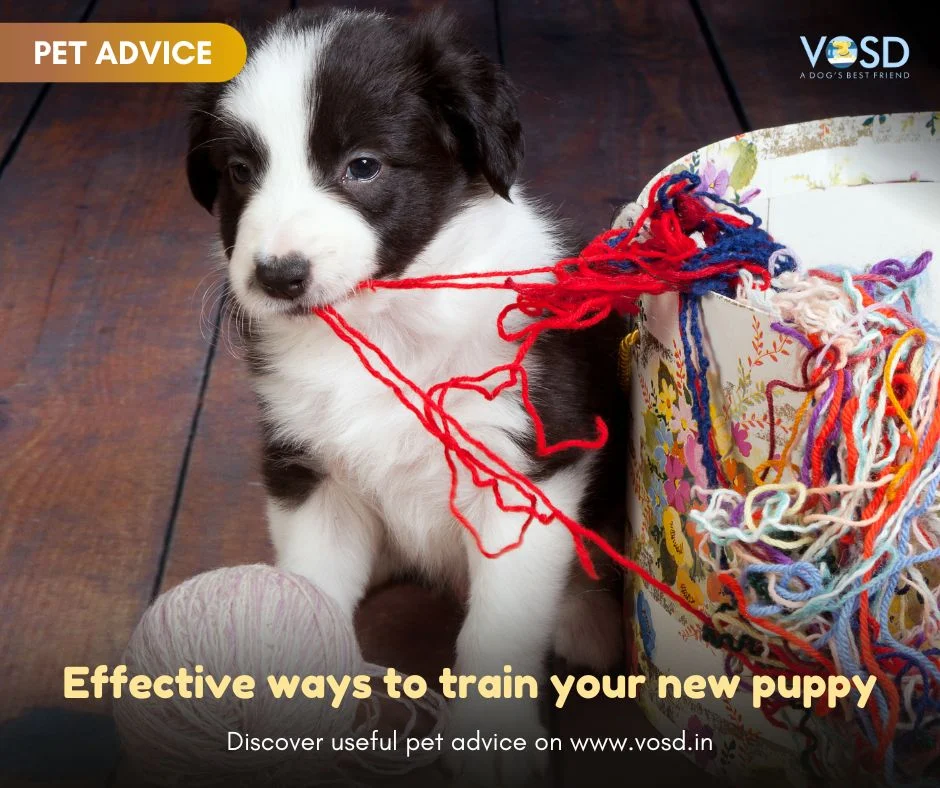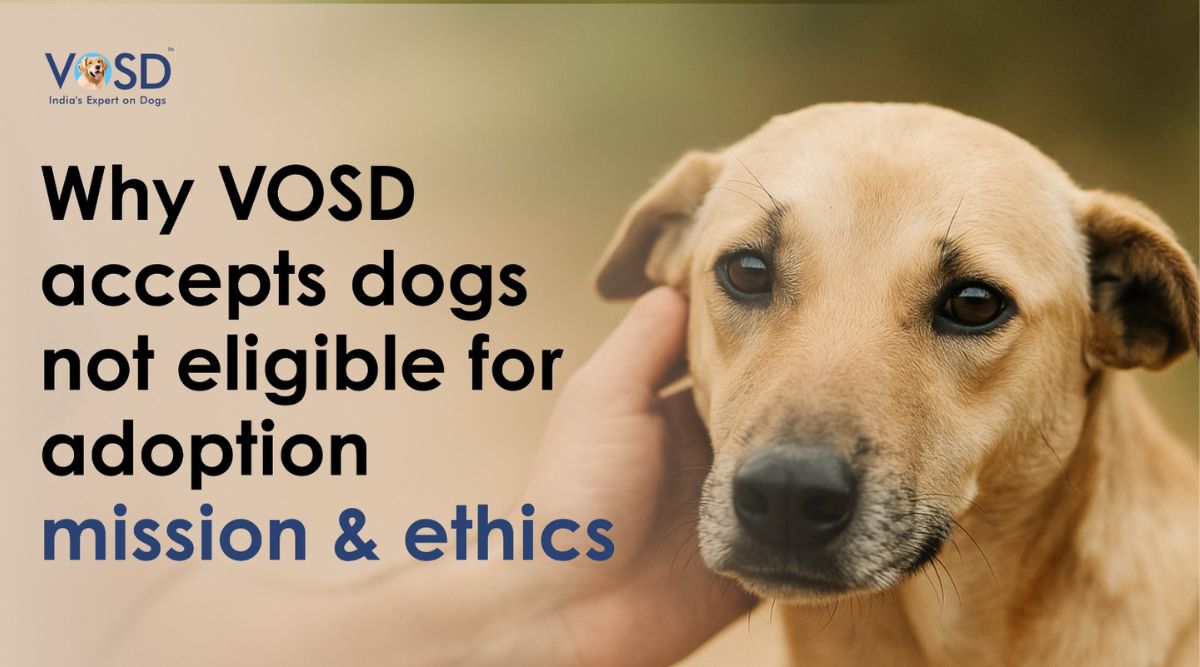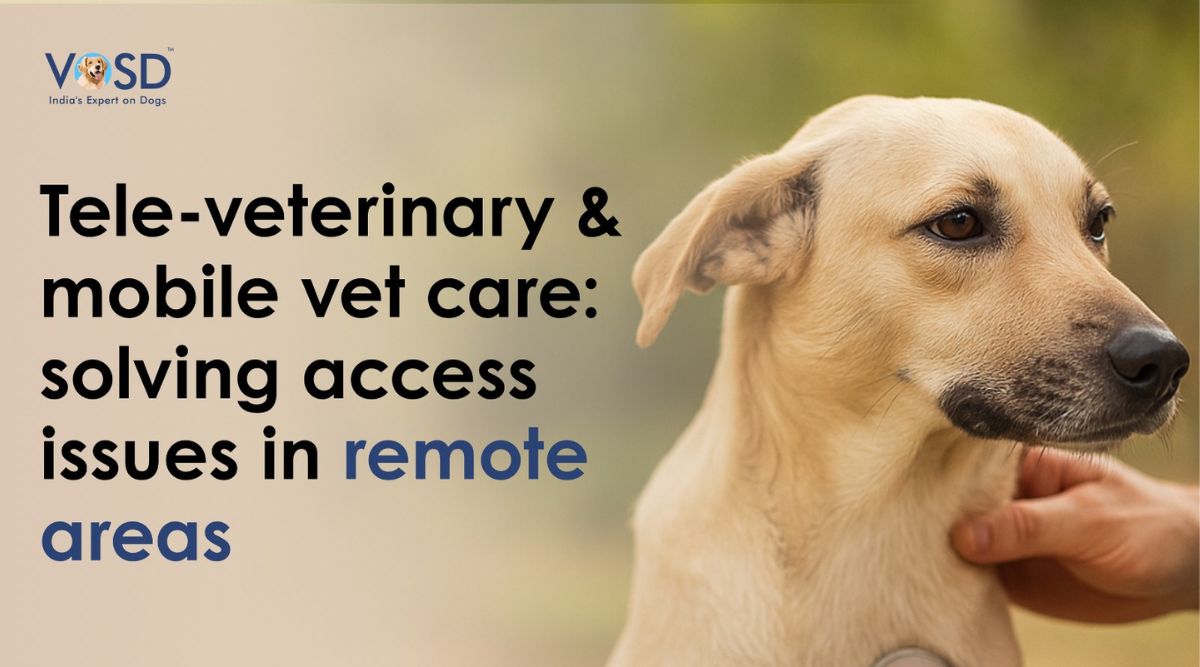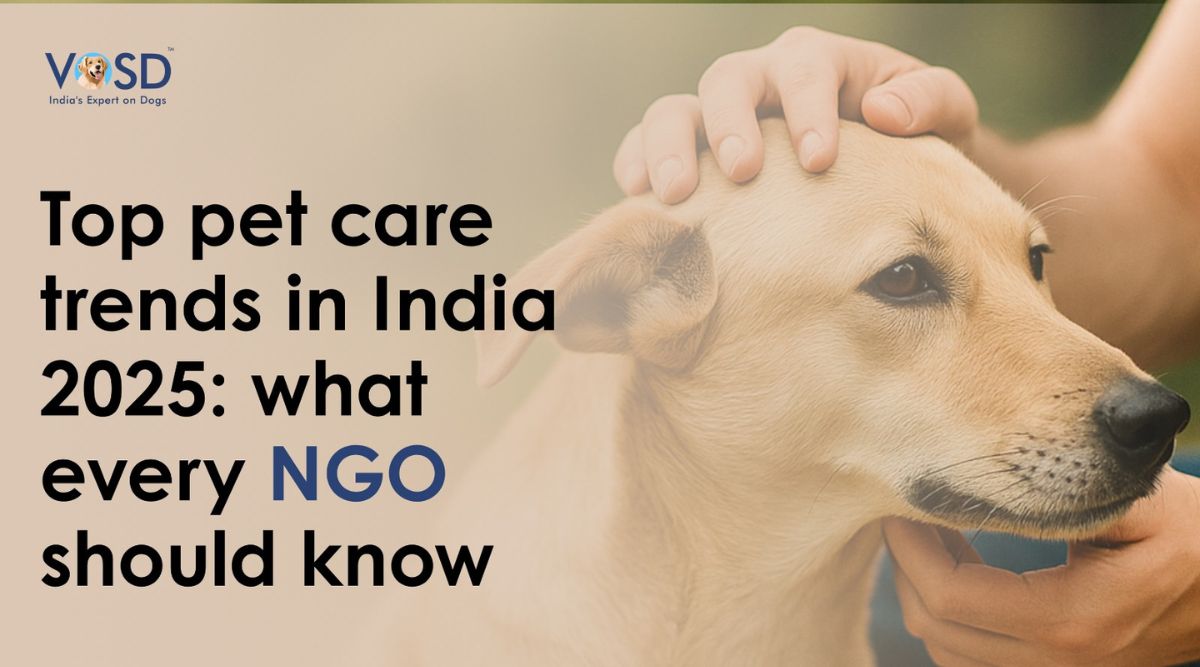Welcoming a new puppy into your home is an exciting yet challenging experience. From their adorable antics to their boundless energy, puppies bring immense joy, but they also require diligent training to become well-behaved and happy companions. Not only does proper training contribute to a harmonious household, but it also helps prevent unwanted behaviours that could result in costly dog expenses down the line.
Here are five effective ways to train your new puppy and also help a dog become the best version of themselves.
1. Nailing the Basics: Housetraining and Crate Training Tips for Your Puppy
Prevent indoor accidents with a schedule and positive reinforcement
- Puppies thrive on routine. Set specific times for feeding, play, and bathroom breaks. This helps regulate their system and reduces the likelihood of accidents indoors.
- Keep a close eye on your puppy, especially after eating, drinking, playing, or waking up. Signs like sniffing, circling, or squatting may indicate they need to go outside.
- Celebrate success! Praise and reward your puppy immediately after they eliminate outdoors. Use treats, verbal praise, or a favourite toy to reinforce good behaviour.
- Take your puppy to the same spot outdoors each time. The familiar scent will encourage them to do their business there.
- Accidents happen, but it’s crucial to clean them thoroughly. Use enzymatic cleaners to eliminate odours, as residual scents may attract your puppy back to the same spot.
Make the crate a safe, cosy space, not a punishment
- Start by making the crate appealing. Place comfortable bedding, toys, and treats inside to encourage exploration.
- Feed meals near the crate or inside it, allowing your puppy to associate the crate with positive experiences and mealtimes.
- Begin with short periods and gradually extend the time your puppy spends in the crate. Avoid leaving them alone for too long initially.
- The crate should be a safe, comfortable space, not a form of discipline. Never use it as punishment or isolate your puppy for misbehaviour.
- Encourage your puppy to sleep in the crate at night and before you leave the house. This helps them associate the crate with rest and prevents anxiety when you’re away.
- Ensure the crate is appropriately sized—enough room to stand, turn, and lie down comfortably. Too much space can lead to accidents, while too little can cause discomfort.
- As your puppy demonstrates reliability in housetraining, gradually expand their freedom in the house under supervision.
Remember, patience and consistency are key when training your puppy. Every pup is different, so adjust your approach based on their progress and individual needs. With time, positive reinforcement, and a nurturing environment, your puppy will master housetraining and see the crate as a safe haven, not a punishment zone.
2. Mastering Obedience: Sit, Stay, Heel, and More
Start with Basics:
- Sit: Begin with a simple command like “sit.” Hold a treat close to your puppy’s nose and slowly move it up, encouraging them to follow the treat with their nose, causing their bottom to lower. Once they’re in the sitting position, reward them immediately with the treat and verbal praise. Repeat this process consistently.
- Stay: After your puppy has learned to sit reliably, introduce the “stay” command. Ask them to sit, then show your open palm toward them while saying “stay.” Step back a short distance and return immediately to reward them if they remain seated. Gradually increase the distance and duration.
- Heel: Use a leash to guide your puppy into the proper heel position, walking at your side. Reward them for staying in this position. Start in a low-distraction environment and gradually add distractions.
Techniques for Training:
- Use treats or toys to guide your puppy into the desired position. Slowly reduce the lure while still rewarding them for performing the command correctly.
- Show your puppy what you want them to do. For instance, sit in front of them to encourage them to sit or walk beside you to demonstrate the heel command.
- Reward desired behaviour immediately and consistently with treats, verbal praise, or toys. This reinforces the behaviour and encourages your puppy to repeat it.
Balance firm leadership with a positive approach
- Be consistent with your commands, rewards, and expectations. Use the same cues and gestures each time to avoid confusion.
- Be firm with your commands but avoid harshness or punishment. Positive reinforcement is far more effective in encouraging desired behaviour.
- Obedience training takes time. Be patient and persistent, practicing regularly in short, engaging sessions rather than long, exhausting ones.
- Each puppy learns at its own pace. Adjust your training methods to suit your puppy’s temperament and capabilities.
- Always conclude training sessions on a positive note, even if progress is slow. End with a command your puppy knows well and reward them for following it correctly.
Remember, the goal of obedience training is to build a strong bond between you and your puppy while establishing clear communication. By using positive reinforcement techniques, maintaining consistency, and showing patience, you’ll see your puppy master essential commands while fostering a positive and trusting relationship.
3. Stopping Puppy Biting and Rough Play
Redirect chewing and nipping with toys and timeout breaks
- Provide Appropriate Chew Toys: Offer a variety of chew toys designed for puppies. These toys can soothe teething discomfort and redirect their chewing instincts away from inappropriate items like furniture or shoes.
- Use the “Ouch” Method: When your puppy bites too hard during play, let out a high-pitched “ouch” to mimic a puppy’s yelp. This simulates how they learn bite inhibition from their littermates. Withdraw attention briefly to signify the end of playtime.
- Implement Timeout Breaks: If the biting persists despite the “ouch” method, calmly end the interaction and put your puppy in a brief timeout. This teaches them that rough play results in the cessation of fun.
Channel energy into gentle play to avoid aggression
- Encourage Gentle Play: Engage in interactive games that encourage gentleness, such as tug-of-war with soft toys or fetch with a ball. Reward calm and gentle behaviour during play.
- Avoid Aggressive Play Styles: Discourage play styles that can escalate aggression, such as wrestling or encouraging your puppy to nip at your hands or clothing.
- Set Clear Boundaries: Establish boundaries during playtime. If your puppy becomes too rough, immediately stop the game and redirect their attention to an appropriate toy or activity.
Remember, puppies explore the world with their mouths, and biting is a natural part of their development. By redirecting their behaviours with appropriate toys, setting boundaries during play, and consistently reinforcing gentle behaviour, you’ll help your puppy learn appropriate ways to interact without resorting to biting or rough play.
4. Preventing Separation Anxiety from the Start
Ease loneliness with interactive toys when you leave
- Interactive Toys and Puzzles: Provide engaging toys and puzzles designed to keep your puppy mentally stimulated while you’re away. Toys that dispense treats or have hidden compartments encourage independent play and help distract them from feeling lonely.
- Gradual Departures: Practice short departures. Start by leaving your puppy alone for short periods, gradually increasing the duration. This helps them learn that departures are temporary and that you’ll return.
- Establish a Routine: Create a consistent routine around departures and arrivals. Predictability helps reduce stress for your puppy. Incorporate playtime, walks, and feeding times into a regular schedule.
Avoid reacting to attention-seeking behaviours
- Ignore Attention-Seeking Behaviours Before Departure: Prior to leaving, avoid giving excessive attention or making a fuss. This prevents your puppy from associating your departure with heightened emotions.
- Calm Departures and Arrivals: Keep departures and arrivals low-key. Don’t make a big fuss when leaving or returning home. This helps normalize the routine and prevents your puppy from getting overly worked up.
- Gradual Desensitization: Practice “departure cues” such as picking up keys or putting on shoes without actually leaving. This helps desensitize your puppy to these cues, reducing anxiety triggered by them.
Remember, preventing separation anxiety involves creating a positive and predictable environment, gradually exposing your puppy to alone time, and avoiding overreaction to attention-seeking behaviours. By incorporating these strategies into your routine, you’ll help your puppy develop independence and reduce anxiety when left alone.
5. Socialising Your Pup with Other Dogs
Carefully introduce pups to dog parks and playgroups
- Gradual Exposure: Introduce your puppy to new dogs and environments gradually. Begin with controlled settings, such as playdates with known calm and friendly dogs, before progressing to busier places like dog parks.
- Positive Experiences: Ensure the initial interactions are positive. Monitor the play and step in if necessary to prevent overwhelming situations. Reward good behaviour with treats and praise.
- Vaccination and Health: Ensure your puppy is up-to-date on vaccinations and parasite prevention before exposing them to areas where other dogs frequent.
- Supervision: Always supervise your puppy during socialization sessions. Watch their body language and intervene if play becomes too rough or if signs of discomfort arise.
Teach good manners and interaction skills off-leash
- Recall Training: Practice recall commands in a controlled environment before off-leash interactions with other dogs. Reliable recall helps you call your puppy back if needed during play.
- Basic Obedience in Distraction Environments: Teach and reinforce basic commands like “sit,” “stay,” and “leave it” in different settings, gradually increasing distractions. These commands are invaluable for managing interactions with other dogs.
- Encourage Polite Play: Guide your puppy’s behaviour during interactions. Encourage gentle play, discourage excessive roughness, and teach them to respect other dogs’ cues for breaks.
- Respect Personal Space: Teach your puppy to respect other dogs’ personal space. If another dog shows signs of discomfort or wants space, redirect your puppy’s attention elsewhere.
Remember, early and positive exposure to other dogs is crucial for your puppy’s development. By carefully introducing them to different dogs, teaching good manners and interaction skills, and ensuring positive experiences, you’ll help your puppy become a well-adjusted and socially confident companion.
Conclusion
Training a new puppy requires patience, consistency, and a compassionate approach. By focusing on housetraining, obedience, managing rough play, preventing separation anxiety, and socialization, you can lay a strong foundation for your puppy’s development.
Not only does this contribute to a harmonious household, but it also helps reduce potential dog expenses associated with behavioural issues. Remember, every puppy is unique, so adapt your training methods to suit their personality and needs.
With dedication and positive reinforcement, you’ll help a dog become a well-mannered and happy member of your family.








